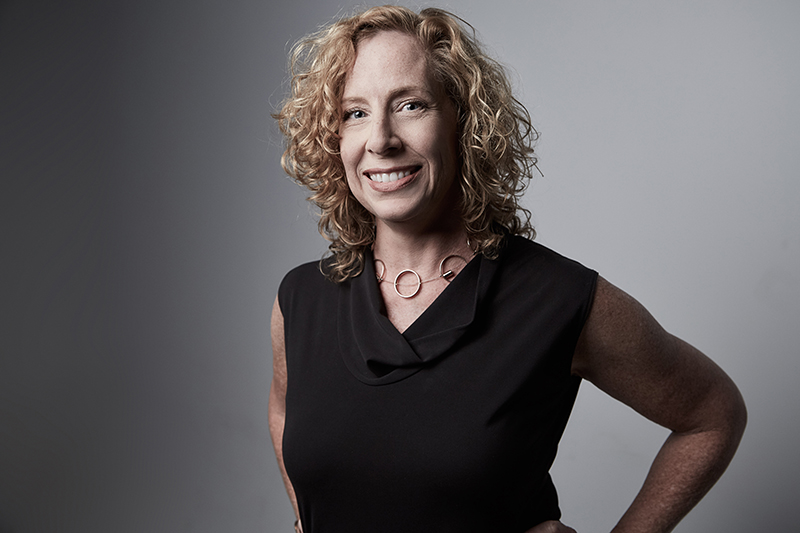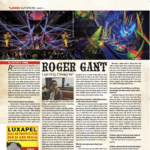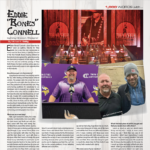
Production Designer and Partner at Silent House Productions
Tamlyn Wright’s career includes designing world tours, broadcast music specials and award shows, e-sports, gaming and theme park environments, theater, corporate brand events, car shows, film and circus performances. As a partner in the design firm Silent House Productions, Wright currently specializes in designing live events and environments that blur the lines of architecture and digital scenery. She’s won four Primetime Emmy Awards and three Art Director’s Guild Award plaques. Most recently Wright won the Parnelli Award for Scenic Design for Taylor Swift’s Reputation tour, which was presented at the 2019 ceremony.
PLSN: How did you get into the industry?
Tamlyn Wright: I’d grown up spending summers with my grandparents at their citrus grove. My grandfather was a top aerospace designer, and in his retirement at his farm, he built cars and boats. I had a workbench in his shop with a miniature tool kit. He taught me how to visualize, draft and build. For a little girl in the 1970s’, that was probably unusual recreation, but there wasn’t a grandson, so I happily filled that void. Also, my costume-designing great-grandmother, along with my grandmother and mother, all sewed and did macramé. Through my artisanal family I learned skills of drawing, sewing, painting and carpentry, without seeing them as skills — it was just what we did for recreation.
Growing up, I was a very focused amateur athlete, and while a senior in high school, I was in a car crash and out of commission for six weeks. I was already taking theater class in school and saw that everyone else was having fun their senior year and enjoying life. The crash distracted me in a really good way. Theater pulled me in and used all my skills while I was out of commission, and I never looked back. My high school theater teacher saw those skills in me and suggested I study tech theater in college. Theater gave me a wonderful foundation for what I do now — having an eye for space and its possibilities, a sense of scale and the process of what it takes to put on a show.
Who were some of your early mentors?
I studied theater at a small but fierce theatre department at Texas Wesleyan University in Fort Worth, under Joe Brown, who’s still there. I flourished in that environment. Annually we toured shows with the American College Theatre Festival (ACTF), where a theater school program takes their shows “on tour” to a host school campus. That experience really informed my future in a way that I can only see now looking back, as we had to design all the sets to fit into trucks and start to understand what it took to tour, even on a small bus and truck scale. It gave us an understanding that a set has to be built to fit into a backstage door, pack into a truck, for a budget, things like that. It was a wonderful training ground for touring and live performance; coming together as a group and getting something done on the fly; in a foreign environment and most often with strangers.
What was your next step along your path?
I moved back to my native LA and went to CalArts for set and costume design where I gained another mentor — head of scenic design Michael Smith. He was pivotal in really making me aware of choices I was making subconsciously and that I should lean into those more. He was a wonderful guide in developing and helping me find an awareness of my own aesthetics.
Talk about switching to designing television and concert projects…
I started dabbling in so many related entertainment industries. It didn’t take long for me to see I wasn’t going to be able to pay my bills doing theater, even on staff at the LA Opera, but I really wanted to keep working in live performance somehow. I ended up freelancing during slow production times and on offseason, picking up design work with local theme parks and corporate clients, where branding and marketing are king. Finally working on variety shows in broadcast television on music events, concerts, specials and award shows connected me to the music industry.
Another key mentor for me was (the late) Mark Fisher. I developed camaraderie with Mark and his studio team at Stufish and worked as their U.S.-based art director for about 12 years, helping push along all their U.S. projects in Las Vegas and on broadcast shows. Mark was a huge influence on me as far as seeing the world as a global entertainment industry and family.
I’d done a few corporate and broadcast events globally, but the music industry’s network was a complex matrix, and Mark’s legacy and influence is still quite epic as the father of tour design. He was a man of very few words. He’d be off around the world and I’d get a three-word answer from a complex question I had asked. It was always a very concise conversation that led to a lot of successful shows somehow. Working with Mark made me refine my communication skills, and I still use my black drawing book and my pens daily. My doodles are nothing like his, but I have created my own style.
What were some other moments that set you on your current path?
I learned of Baz Halpin, now my partner at Silent House, through Mark, who was at the time working with him on a tour for P!nk. A few years later, Baz and I crossed paths on the 2011 VMAs; he was across with talent, and I was art directing. I was there as design support and to execute his show moment ideas in our main stage environment.
Talk about your partnering with Baz and building Silent House.
Baz and I had a huge amount of admiration and respect for each other professionally when we partnered, and it’s been an amazing few years of growth. Two years ago, we moved to our current studio in Burbank, and created Flower Street Factory, our creative campus, while we grew our partnership with lighting designers Cory FitzGerald and Alex Reardon and show director/choreographer Melissa Garcia. It’s a rare day we all overlap in the studio, but when we do, it’s a lovely hive. We’ve grown from four people to a wonderful team of talents and positive energy and ideas.
What do you enjoy most about your career?
Between the busy dual worlds of the studio and project sites, the thing I look forward to—and find precious—is capturing a creative bubble of time of the first deep dive into the design of a project. The actual first sitting down to draw something is probably one of my favorite things. It’s a moment that is raw; it always has been—and will be. It’s a moment of mood, music, mediation, architecture and art, so it never really feels like work. It’s a moment of solitude and whittling a design essence down for whoever the client may be. Of course, the first night of the show with the adrenaline of a solid performance and a full audience is the best.
Michael S. Eddy is editor-in-chief of PLSN affiliate Stage Directions magazine.


